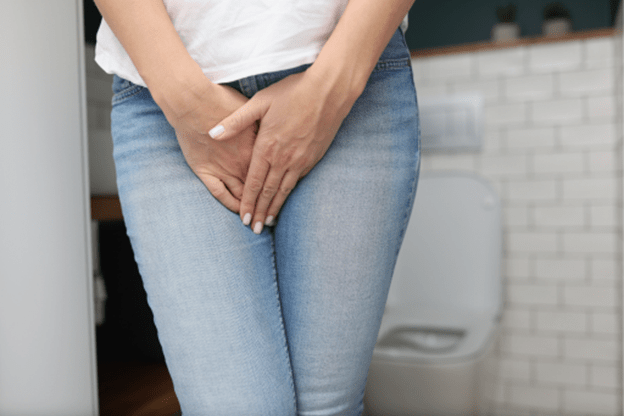
Debunking Myths About Urinary Incontinence in Women

There are several myths concerning female urine incontinence, one of which is that there are no effective treatments for the illness. The reality is more encouraging. What you need to know is as follows.
You may be familiar with the following urinary incontinence myths: It results from the size of your bladder or is just a sign of aging. But for women who suffer from urine incontinence, the facts provide answers and encouragement. Our article provides important information, including treatment alternatives that might enhance your quality of life, if you’re dealing with urine leaks and need assistance sorting reality from myth.
Myth 1: Incontinence of the urine is a normal component of aging.
While becoming older does not automatically make urine leaks a nuisance and, thus, not a serious health issue, it can perform a role in the onset of urinary incontinence.
Although our bodies and tissue become frailer as we age, we should not assume urine incontinence to be normal.
Myth 2: There are few or no treatments available for urine incontinence.

Despite the fact that half of all women may develop urine incontinence at some point in their lives, there are still steps that individuals can take to seek help.
Since women are accustomed to caring for everyone else, they often prioritize the needs of others over their own. It’s critical for women to receive the treatment they require since urinary incontinence impacts their quality of life and is more than simply an inconvenience.
The treatment of urinary incontinence may involve various approaches, but the best one for you will depend on the type of incontinence you have.
Types of urinary incontinence:
- Stress Incontinence: Urinary leaks that happen while doing things like sneezing or laughing are a clear indicator of stress incontinence. Weaker pelvic floor muscles bring on this kind of incontinence, which is more prevalent in women.
- Urge Incontinence: Leakage happens when there is a sudden, intense desire to urinate, with little advance notice or opportunity to use the toilet. An overactive bladder or a urinary system infection may bring on this kind of incontinence, which is common in older persons.
- Overflow incontinence: A full bladder causes small, uncontrolled pee leaks. Diabetes, certain drugs, and neurologic conditions may all contribute to this kind of incontinence.
- Functional Incontinence: Leakage that happens when a person is unable to use the toilet in a timely manner due to mobility limitations rather than problems with bladder control.
- Mixed Incontinence: The combination of stress incontinence and an overactive bladder causes urine leaking, which is known as mixed incontinence.
Myth 3: The only effective treatment for urine incontinence is surgery.

After a correct diagnosis, you and your doctor can determine whether and when surgery is the best course of action for you.
Many people are reluctant to disclose their leakage because they are concerned about needing surgery. But before considering surgery, we may give the patients a wide range of other treatments.
The doctor should understand the needs of the patient. They can suggest surgery as a further step if they’ve tried a few nonsurgical methods but the patient isn’t improving — and if surgery is a wise option for them. Many of these surgeries have successful results and don’t necessitate hospitalisation.
Myth 4: You must use absorbent daily products if you have urine incontinence.
Many women won’t require the use of absorbent items once their particular kind of incontinence has been cured. There are other options available, even if some individuals are more at ease using an absorbent substance during particular activities.
Myth 5: Urinary incontinence will improve if you limit your fluid consumption.
While it might appear that limiting your fluid intake may lessen your desire to pee, doing so can actually exacerbate bladder issues.
Some individuals attempt to cease drinking fluids in an effort to lessen the need to use the toilet due to the detrimental effects that urinary incontinence may have on a person’s quality of life. But when they do consume liquids, their bladder can’t handle it, so that strategy is ineffective.
People who experience urine incontinence ought to hydrate themselves consistently throughout the day.
Myth 6: A tiny bladder is the cause of urinary incontinence.
Although it may appear true, urinary incontinence is not induced by the capacity of the bladder.
Your bladder size is not the primary source of your problems, whether you have a really intense need to pee or only a small number of urine leaks when you go to the toilet. It has less to do with the capacity of the bladder and more to do with how the bladder’s muscles and nerves control and discharge pee over time.
Shop for adult incontinence products with Absorba Nateen
When it pertains to incontinence, adult diapers might be of assistance. It is good to be able to rely on a solution that aids as a line of protection when concern over leaks reaches its peak.
To make things simpler for you, shop for adult incontinence necessities with us today. Ranging from adult diapers to underpads and adult wipes, we are the one-stop shop here to address any incontinence concerns.
Adult diapers come in a variety of styles, sizes, and fabrics, so you could be stumped when it comes to finding the right one to meet all of your demands. If you’re looking for adult diapers that provide the finest leakage protection, go no further than Absorba Nateen. The SAP (Super Absorbent Polymer) outer layers of the adult diaper pants will keep you dry for up to ten hours and help you maintain perfect cleanliness.
At Absorba Diaper, we are the leading distributor of adult diapers in Singapore with a wide selection of eco-friendly and ultra-soft adult pull-up diapers catered to your every need. We can help you or your loved ones overcome incontinence together and live your life to the fullest!
Contact us for any inquiries regarding our adult diapers.
